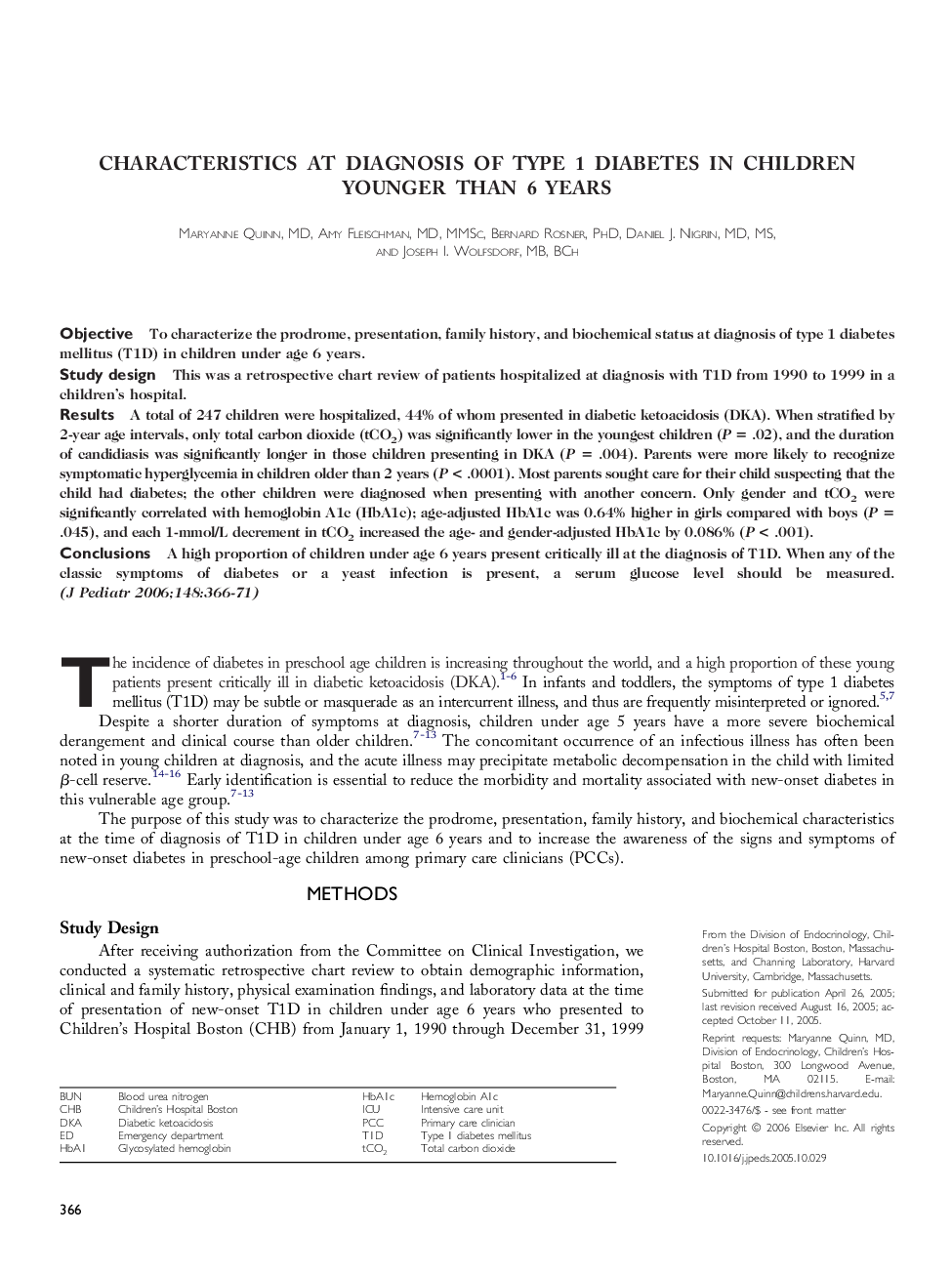| Article ID | Journal | Published Year | Pages | File Type |
|---|---|---|---|---|
| 4169508 | The Journal of Pediatrics | 2006 | 6 Pages |
ObjectiveTo characterize the prodrome, presentation, family history, and biochemical status at diagnosis of type 1 diabetes mellitus (T1D) in children under age 6 years.Study designThis was a retrospective chart review of patients hospitalized at diagnosis with T1D from 1990 to 1999 in a children’s hospital.ResultsA total of 247 children were hospitalized, 44% of whom presented in diabetic ketoacidosis (DKA). When stratified by 2-year age intervals, only total carbon dioxide (tCO2) was significantly lower in the youngest children (P = .02), and the duration of candidiasis was significantly longer in those children presenting in DKA (P = .004). Parents were more likely to recognize symptomatic hyperglycemia in children older than 2 years (P < .0001). Most parents sought care for their child suspecting that the child had diabetes; the other children were diagnosed when presenting with another concern. Only gender and tCO2 were significantly correlated with hemoglobin A1c (HbA1c); age-adjusted HbA1c was 0.64% higher in girls compared with boys (P = .045), and each 1-mmol/L decrement in tCO2 increased the age- and gender-adjusted HbA1c by 0.086% (P < .001).ConclusionsA high proportion of children under age 6 years present critically ill at the diagnosis of T1D. When any of the classic symptoms of diabetes or a yeast infection is present, a serum glucose level should be measured.
